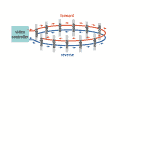
Fault Tree Analysis
Abstract
Chris and Fred discuss the basics and uses of fault tree analysis. Chances are that if you have been taught about fault trees, it was for only one of the many ways you could use them.
ᐅ Play Episode
Your Reliability Engineering Professional Development Site
by Christopher Jackson Leave a Comment

Chris and Fred discuss the basics and uses of fault tree analysis. Chances are that if you have been taught about fault trees, it was for only one of the many ways you could use them.
ᐅ Play Episode
by Christopher Jackson 2 Comments

Chris and Fred discuss how we go about modeling the reliability of systems … particularly with things called ‘block diagrams.’ Might this help you?
ᐅ Play Episode
by Bryan Christiansen Leave a Comment
Production processes come to a grinding halt when equipment breaks down. This results in production delays, costs incurred to fix the machine, and opportunity costs. The production process cannot proceed until the maintenance activity on the faulty machine is complete — unless you have provisioned equipment redundancy. [Read more…]
by Les Warrington Leave a Comment

In the article Calculating Network Reliability the lack of published analytical solution for dual-ring network reliability was highlighted. This article provides a neat solution and further challenges readers to offer their proof or prior publication reference. The solution and the author’s general proof will be presented at RAMS 2020.

I have worked in the field of reliability for a good many years. I have presented both beginner and advanced reliability engineering courses. I have even read several books. 🙂 But, across all this, component redundancy has never been explained beyond simple serial and parallel configurations.
So, it was a shock to my system to be presented with a scenario that couldn’t be solved using a simple parallel system.
My previous work had challenged me only as far as:
But now I was being challenged by a network that was none of these.